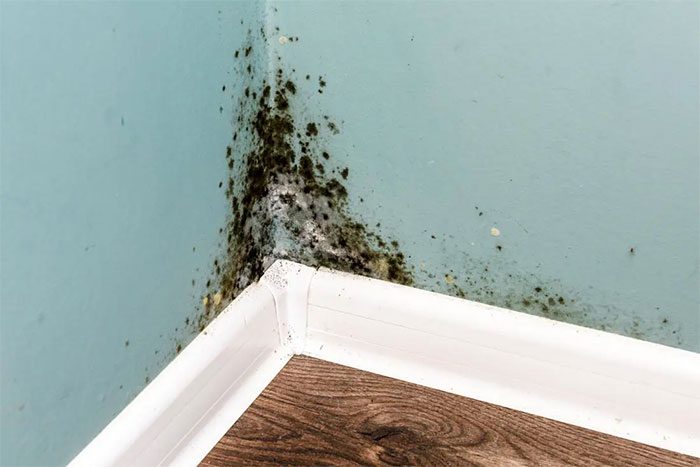Exposure to and contact with mold affects adults and children differently. Some individuals may experience no issues at all, while others, particularly those with mold allergies, can develop symptoms. Common symptoms include nasal congestion, wheezing, red eyes, skin rashes, and itching.
This article will explain the common and rare symptoms of mold exposure that may occur when coming into contact with mold.
1. Common Symptoms of Mold Exposure
Some types of mold can trigger allergies and asthma. Mold thrives in damp, poorly lit areas such as basements, around sinks, bathrooms, roofs, windows, and places where water collects. The most common indoor molds include Cladosporium, Penicillium, and Aspergillus.
1.1. Mold Allergy Symptoms
Mold allergy symptoms include:
- Itchy nose, eyes, and throat
- Sneezing
- Nasal congestion
- Coughing
- Runny nose
- Phlegm
- Post-nasal drip.
Like other allergic conditions, mold allergies can occur at any age. Symptoms may arise immediately after exposure or develop later. Delayed symptoms can complicate the identification of the relationship between the allergen and the symptoms.

Mold allergy symptoms can develop immediately after exposure or later. (Image: Internet).
1.2. Asthma Symptoms
In addition to allergies, mold can trigger asthma symptoms in some individuals. These symptoms include:
- Coughing
- Wheezing
- Shortness of breath
- Chest tightness.
When you have asthma, your airways may become inflamed, constricted, or produce excess mucus. While asthma can be managed, an asthma attack requires prompt intervention to prevent life-threatening situations.
2. Rare Symptoms of Mold Exposure
Less common reactions to mold exposure can lead to symptoms such as:
- Fever
- Chills
- Muscle pain
- Headache
- Coughing up blood
- Fatigue.
2.1. Hypersensitivity Pneumonitis
Hypersensitivity pneumonitis is a non-allergic lung condition that does not cause asthma. It can trigger allergic reactions with symptoms like coughing and difficulty breathing, or symptoms similar to flu such as body aches, headaches, and fever. This condition can present in acute form or develop into a chronic condition (about 5%) if not treated promptly.

Mold grows in damp, water-collecting areas. (Image: Internet).
Individuals at high risk for hypersensitivity pneumonitis include those who regularly handle moldy hay and grains, although only 5% to 15% of this high-risk group typically develop the condition.
2.2. Allergic Bronchopulmonary Aspergillosis (ABPA)
Allergic bronchopulmonary aspergillosis (ABPA) is a hypersensitivity reaction to the Aspergillus species (usually A. fumigatus) that occurs mainly in asthma patients or, less commonly, in individuals with cystic fibrosis.
Patients with this condition often develop symptoms such as coughing up mucus mixed with blood, fever, and fatigue. Treatment primarily involves corticosteroids and antifungal medication.
2.3. Fungal Infections
Sometimes, you may contract a fungal infection by inhaling mold spores, such as in the case of Coccidioidomycosis, a lung disease caused by the fungi Coccidioides immitis and C. posadasii.
This fungal infection is non-contagious and generally mild. Symptoms can appear 1 to 3 weeks after exposure to the spores and may last for several months, including fatigue, coughing, fever, chest pain, headaches, body aches, night sweats, and rash. About 5% to 10% of affected individuals may develop long-term complications. Those with compromised immune systems are at the highest risk.

You can develop a fungal infection by inhaling mold spores. (Image: Internet).
3. When to See a Doctor?
Whenever asthma or allergy symptoms occur and feel unusual, it’s advisable to consult a specialist for accurate diagnosis and appropriate treatment.
Some over-the-counter medications can help alleviate mild to moderate symptoms related to mold exposure, including corticosteroid nasal sprays, antihistamines, decongestants, and saline nasal rinses. However, if symptoms do not show signs of improvement or worsen, you should promptly visit a healthcare facility.



















































